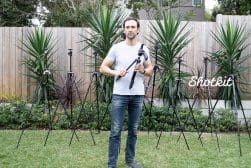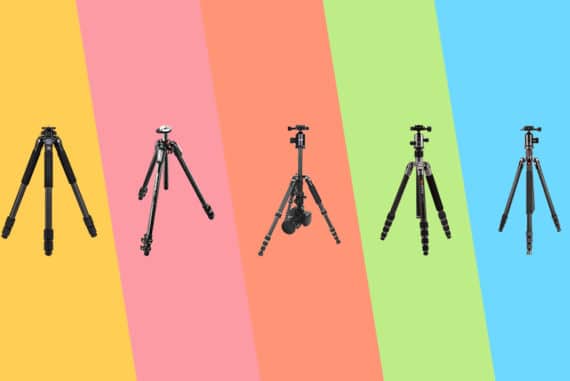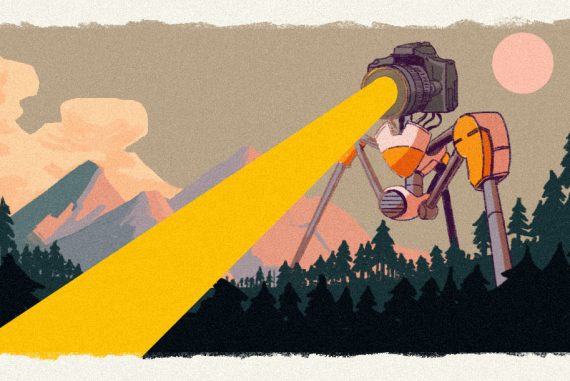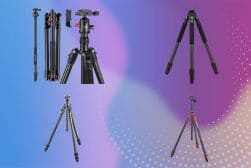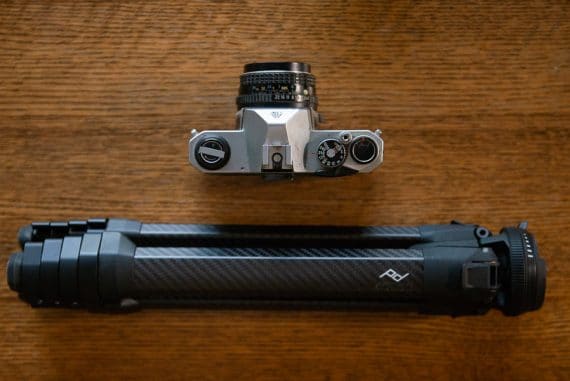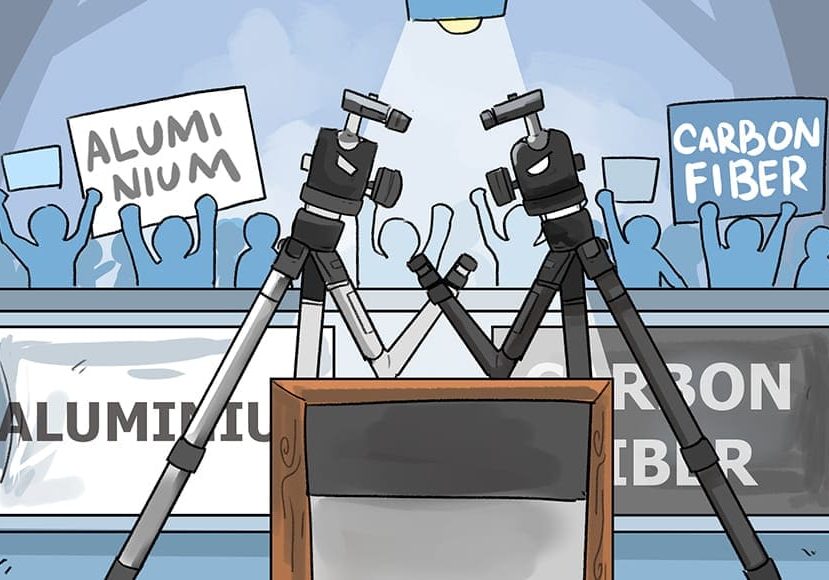
Carbon Fiber vs Aluminum Tripod Guide
Is it worth spending the extra money on a carbon fiber tripod over an aluminium one? What are the benefits of carbon fiber when it comes to tripods?
Camera Gear Guides | Tripod & Monopod Guides | By Don Machuca | Last Updated: February 5, 2024
I put together this carbon fiber vs aluminum tripod guide in an effort to save you some money.
Buying a tripod is confusing enough as it is – there are so many variables to consider. Height, weight, leg locks, ball heads… if that wasn’t enough, now you have to make the big decision about material.
Carbon fiber and aluminum both have their advantages and disadvantages when it comes to tripods.
There’s no right or wrong answer when it comes to choosing what material to invest in, but it’s important that you understand the differences, in order to choose the product that’s most relevant to your needs.
Let’s have a quick look at carbon fiber vs aluminum tripods.
Carbon Fiber vs Aluminum Tripod Summary
So, what is the difference between the two tripods?
Carbon fiber tripods are stiffer, lighter, more weather/corrosion/scratch resistant, and in general, stronger than aluminium. They also look and feel nicer! Aluminium tripods are more stable (due to their increased weight), and often cost less than half the price of an equivalent carbon fiber tripod. Both materials offer good longevity.
1. Stiffness
In this aspect at least, a carbon fiber tripod is superior to an aluminum one since it is stiffer.
The stiffness to weight ratio of carbon fiber is five times greater than that of aluminum, so carbon fiber tripods will definitely exceed aluminum in strength and rigidity.
In photography applications, this means that such tripods do not flex nor transmit vibrations that may induce camera shake.
This translates to images that are sharper and cleaner because even the smallest, most imperceptible movements will be attenuated.
Of course, this is only guaranteed in controlled indoor environments such as studios because external factors such as strong winds will not be present and can therefore not affect the performance of the support.
2. Weight and Portability
“Is carbon fiber lighter than aluminum?” I hear you ask. The answer is a resounding yes. If you need to lug a tripod around, your best bet would be a carbon fiber one. Its light weight means that you can set up in more places with relative ease and therefore, shoot more.
Also, if you’re traveling on foot and need to walk long distances, such a tripod will allow you to cover more ground and end the day feeling less tired – a few extra grams may not seem like much, but when you’re hiking all day.
Another thing to consider is that carbon fiber is far stronger and stiffer than aluminum. As such, you shouldn’t worry about the occasional fall or drop because such occurrences, though undesirable, will not really hurt a carbon fiber tripod’s structural integrity.
Keep in mind, though, that an unusually strong impact can crack the tripod’s carbon fiber components so it’s still very important to keep the support from getting banged up.
3. Longevity
Given the proper care, the service life of both tripod types can pretty much be measured in decades rather than years. However, if subjected to rough handling, a carbon fiber tripod will most likely come out ahead as it is far stronger than its aluminum counterpart.
Then again, professional aluminum tripods are pretty substantial, too so they will be able to endure many years of hard use before they require replacement.
For both supports, normal wear and tear usually manifests in the form of loose locks as well as dings and scratches.
Spots of corrosion may also show up on aluminum tripods. With the exception of loose locks which can easily corrected with a few basic tools, these issues are mainly cosmetic so they can either be repainted or safely ignored for some time.
In this segment of the aluminum vs carbon fiber tripod face-off, it’s a tie!
4. Corrosion Resistance
In indoor environments or if exposure to elements is controlled, both aluminum and carbon fiber tripods will stay in good shape for an indefinite period.
However, if used outdoors constantly without so much as a wipe down, an aluminum tripod will eventually exhibit corrosion.
Though aluminum will not deteriorate in the same way that steel rusts, any unprotected aluminum surface will start to pit over time and generate a powdery white or gray substance known as aluminum oxide.
This is especially true if the tripod is badly scratched up and is being used in places where there is a high amount of dampness and salt in the air.
Carbon fiber on the other hand, happens to be electrically conductive. This means that it can be subject to something called galvanic corrosion especially if it is used as a binder to fasten two different types of metal together.
Fortunately, this isn’t an issue when it comes to tripods so there won’t be much cause for concern.
5. Stability
In this category, aluminum tripods gain an edge – because they’re heavier, they’re far more suited for use outdoors as they’re less affected by heavy gusts of wind.
Also, for as long as they’re planted properly, they usually don’t need to weighted down with heavy bags as their bulk is more than enough to keep things still.
In contrast, a carbon fiber tripod is much lighter, so it tends to be top heavy, especially if a big camera and lens combo is perched on top of it.
In this case, a heavy bag can be hung from the hook at the bottom of the center column (if it has one) but doing so may introduce significant shake as the weighted bag may sway in the wind.
6. Cost
Hands down, aluminum tripods win this round as they’re generally more affordable than carbon fiber tripods.
This isn’t to say though, that aluminum supports are cheap. On the contrary, a good, professional aluminum tripod can represent a substantial investment so they shouldn’t be thought of as second fiddle.
Also, keep in mind that many people purchase aluminum tripods for reasons other than affordability. Some buy them for the high level of stability that their weight provides, while some people buy them because they only intend to use them indoors and not carry them around.
Recommended Carbon Fiber Tripods
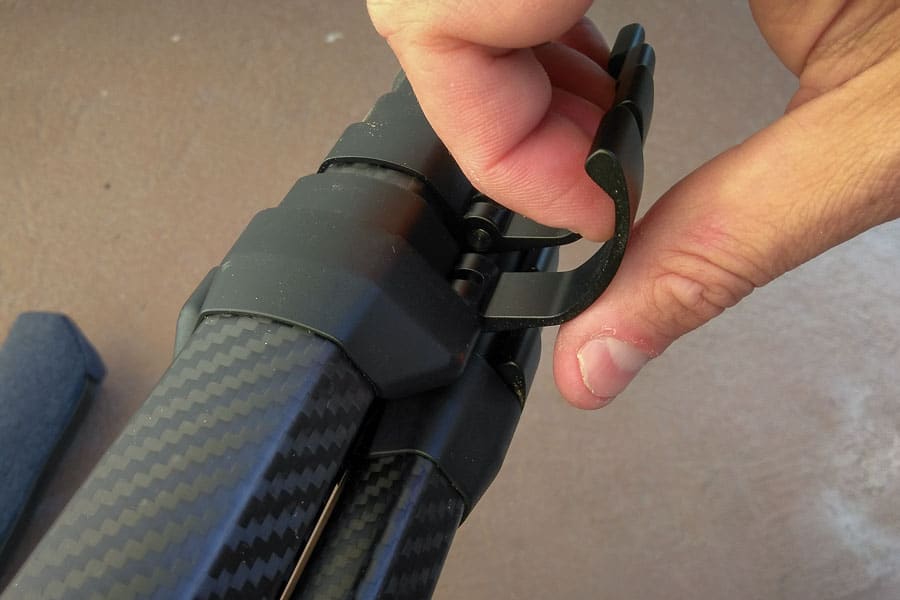
The Carbon Fiber version of the Peak Design Travel Tripod features several unique design features.
There are many good carbon fiber travel tripods, but our pick of the bunch is this one by Peak Design.
Is its premium price tag justified? Well, if you place a value on various innovative design elements that other tripods simply don’t offer (read the Peak Design Travel Tripod Review for more details), then yes it is.
It also comes with a ball head (and rather a cool one at that, which can be operated quickly with one hand) – many of the premium CF tripods come with the legs only (i.e. without a ball head), so if you factor this in, the pricing isn’t really too bad.
There are plenty of innovative features too, such as an integrated mobile stand, fast deploying legs, space-saving leg design, and even the ability to invert the centre column for top-down shooting, which is handy for macro and flat lay photography (see guide).
It’s also backed by Peak Design’s no-quibble lifetime warranty, although judging by the quality of their other products I own, this won’t be required ;-)
Frequently Asked Questions
Which is stronger aluminum or carbon fibre?
Carbon fiber is roughly 10x stronger than aluminum, with a specific tensile strength of 11.719x that of aluminum.
Is carbon fiber more expensive than aluminum?
The cost per pound of aluminum vs carbon fiber is roughly 88c vs $10, i.e. carbon fiber is more than 10x the price of aluminum.
Why is carbon fiber so strong?
Carbon fiber is made of thin, incredibly strong crystalline filaments of carbon, making it 5x stronger than steel and twice as stiff.
Disclaimer: All recommendations are impartial and based on user experience, with no bias to the products or the brand. The products in this post may contain affiliate links.
Final Words
More than just a folding stand, a tripod is a very important piece of equipment that’s supposed to enhance your photography and keep your gear safe. As such, you should carefully consider your options before you spring for one.
Carbon fiber or not, these tripods can have significant price tags so being impulsive and/or hasty is almost always a bad idea.
Buying the first cheap travel tripod you see just about guarantees that you will miss out on great deals and end up with something that’s either overpriced or of little use to you.
If you intend to travel, for instance, you may want to select a carbon fiber tripod because of the weight savings it offers.
On the other hand, if you need a tripod for indoor use, you may want to stick with aluminum and save yourself the expense of a feature you don’t really need.
Whatever your choice is, it’s important to practice a level of objectivity and take the time to define your needs before you pull the trigger.
Having done this, you should then choose among the best items that that your budget will cover while avoiding knockoffs or cheaper yet, unproven brands.
Keep in mind that the tripod you choose is supposed to last you a very long time so you’re going to want to make the right decisions now to avoid repeating this exercise in the near future.
Don Machuca is a writer and professional photographer/videographer from Manila, Philippines who specializes in landscapes, events and product photography.





